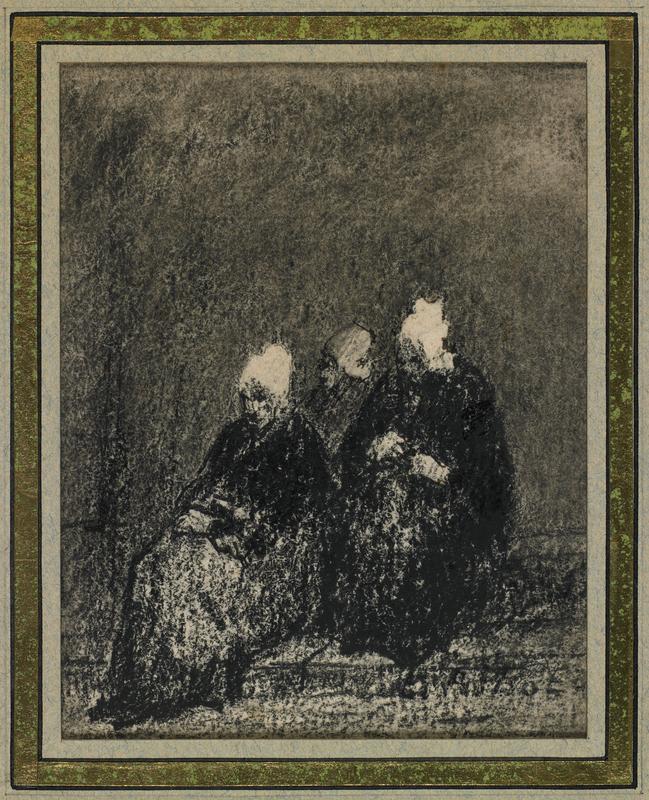
162. Théodule Ribot, Three Breton Women Seated
| Artist | Théodule Ribot, French, Saint-Nicolas-d’Attez, Haute-Normandie 1823–Colombes, Ile-de-France 1891 |
| Title, Date | Three Breton Women Seated, c. 1880 |
| Medium | Black charcoal heightened with white gouache with traces of gum glazing on cream paper |
| Dimensions | 3 3/4 × 2 7/8 in. (9.5 × 7.3 cm) (sight) |
| Inscriptions + Marks | Lower right in charcoal: t. Ribot |
| Provenance | [Shepherd Gallery, New York; to Weisberg]; Yvonne and Gabriel Weisberg, Minneapolis |
| Exhibition History | "Expanding the Boundaries: Selected Drawings from the Yvonne and Gabriel P. Weisberg Collection," Mia (2008) and Snite Museum of Art, Notre Dame, Ind. (2010); "Reflections on Reality: Drawings and Paintings from the Weisberg Collection," Mia, 2022–23 |
| References | Lisa Dickinson Michaux with Gabriel P. Weisberg, "Expanding the Boundaries: Selected Drawings from the Yvonne and Gabriel P. Weisberg Collection" (exh. cat.), Minneapolis Institute of Arts (Minneapolis, 2008), p. 39, fig. 19 |
| Credit Line | Promised gift of Gabriel P. and Yvonne M.L. Weisberg, Minneapolis |
Although Théodule Ribot and his family spent much of their life on the outskirts of Paris, in picturesque Argenteuil and Colombes, he kept a home and studio in Brest, in Brittany. He filled sketchbooks with his studies of the inhabitants; this sheet was detached from a sketchbook and sold as an independent work. Each sketch, observed from life, depicted local women going about their daily activities—shopping at the market, sitting on the steps of a church, knitting, or praying. Ribot was mesmerized by these figures and their traditional garments, including the white coifs on their heads.
This drawing may have been owned by the collector and art critic Roger Marx, who wrote positively about Ribot’s work. It is closely related to a sketch with five women that accompanied Marx’s memorial essay honoring Ribot in the February 1897 issue of the journal L’Image.1 He described the highly individual artist as having “the gentle authority of a resolute, tenacious will.” The present drawing and numerous other works exemplify the various ways in which Ribot—working on a small, intimate scale—saw Bretons as worthy subjects for his art.
GPW
Notes
The drawing, showing five Breton women seated on the ground at a street market, is reproduced in Roger Marx’s article “Théodule Ribot 1823–1891” in L’Image, no. 3 (February 1897), pp. 71–77; see illustration at https://gallica.bnf.fr/ark:/12148/bpt6k5437190q/f21.item ↩︎